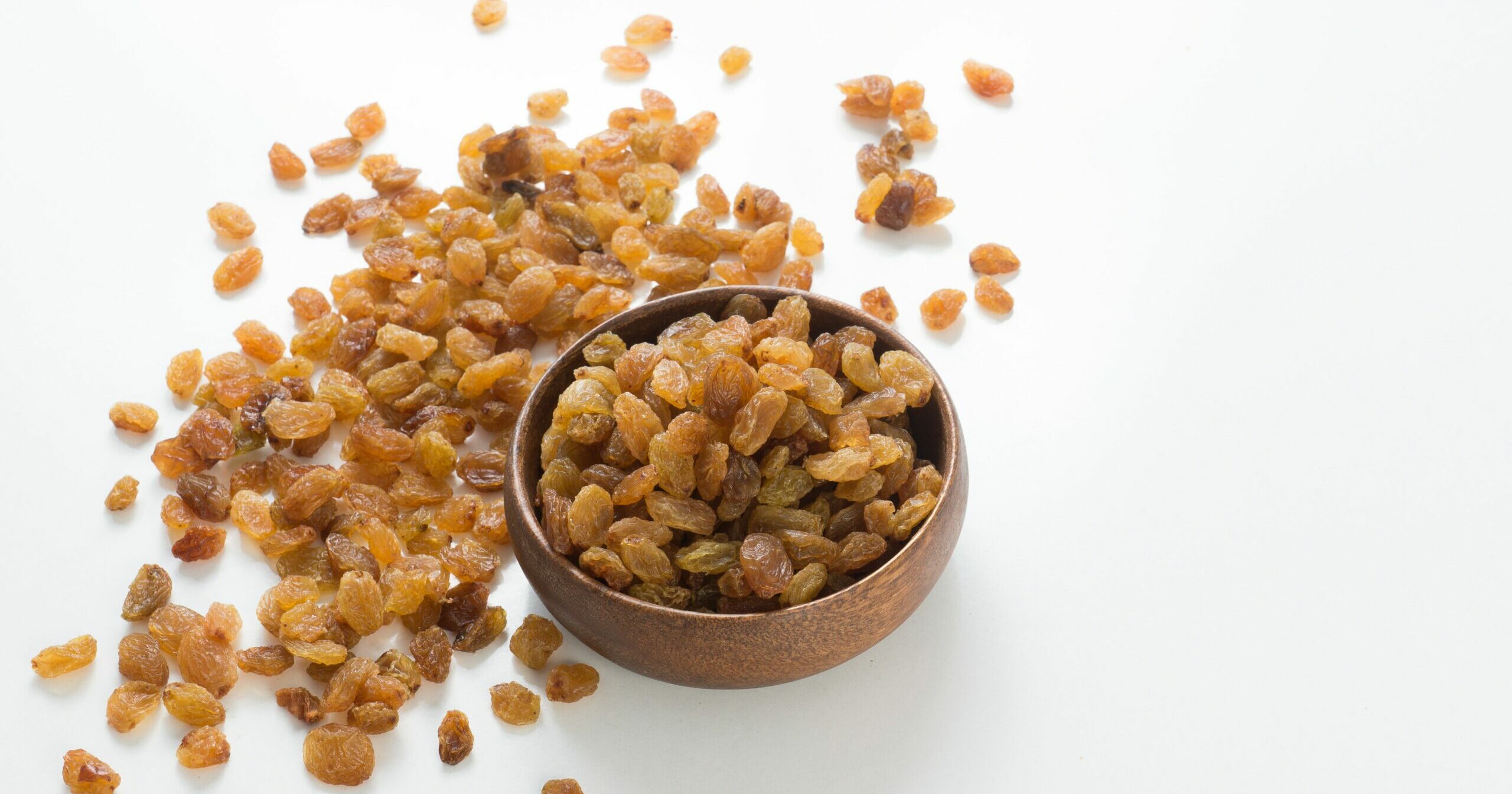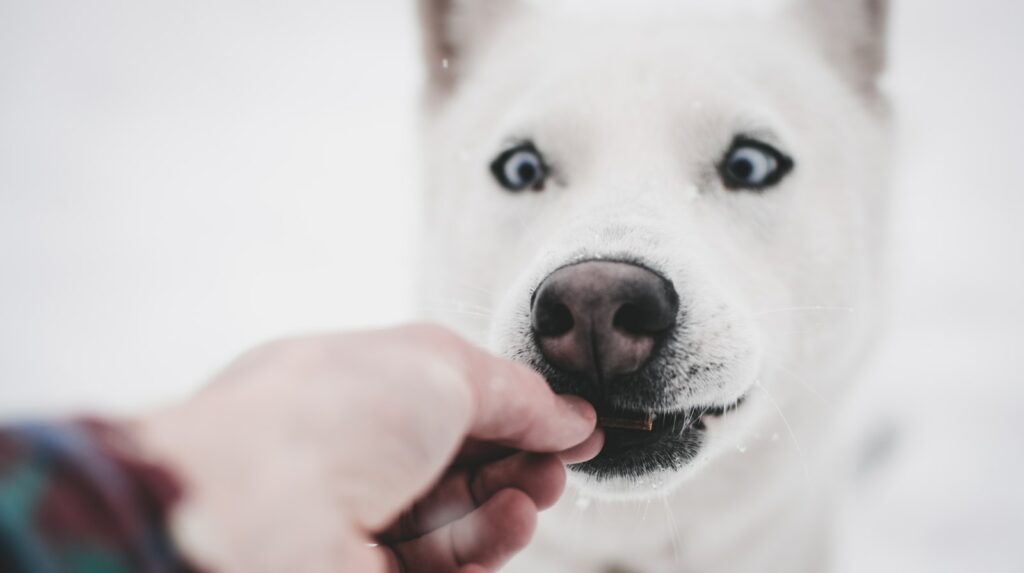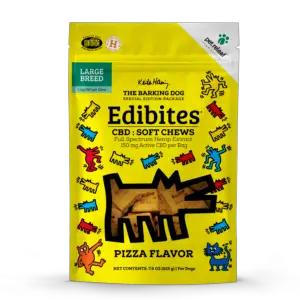
Key points
- Scientists and vets don’t know precisely why grapes and raisins are toxic to dogs, but if your dog ingests grapes or raisins, it’s essential to seek help right away.
- Many symptoms may indicate grape poisoning in dogs, including nausea, vomiting, indigestion, lethargy, decreased urination or complete lack of urination, lack of appetite, and diarrhea.
- The main goal of the treatment is to prevent the absorption of the toxins, which means inducing vomiting and administering activated charcoal up to 6 hours after ingestion.
- If your dog ate raisins, it’s essential to call a vet and get instructions for further actions. You may be able to treat the pet at home, but the dog may need to be hospitalized in many cases.
- No set amount of grapes is safe for your dog. Some pets can tolerate small amounts just fine, and others may get poisoned after ingesting just a few grapes.
Many pet owners love to eat granola, bagels, and cereals and sometimes share a little of their meal with their pets. Giving your dog a piece of your bagel may seem harmless, but it can pose more danger than you can imagine. This is because a lot of human food contains raisins and dried currants. But few pet owners know that grapes, currants, and raisins are some of the most toxic things a dog can eat. If your dog ingests even a tiny amount of these foods, it can cause many health problems, including kidney failure.
Table of Contents
Why Shouldn’t Dogs Eat Raisins?
To date, no studies have been able to prove why this fruit is toxic to dogs conclusively. But many scientists believe that a mycotoxin or an aspirin-like molecule naturally found in grapes blocks blood flow to the kidneys when it enters a dog’s system. At the same time, more recent research shows that tartaric acid, which is found in grapes and raisins, can cause poisoning in dogs. Since no specific toxic agent has been clearly identified yet, and we still don’t understand the mechanism of grape toxicity in dogs, grape poisonings are very difficult to treat. This is why it’s vital to prevent any exposure to raisins, grapes, or currants.
Types Of Grapes That Are Dangerous To Dogs

Generally, all foods that contain grapes, raisins, and currants pose a potential danger of poisoning for your dog. So be careful and don’t share your breakfast granola mix, raisin bran cereal, trail mix, or baked goods with your pet. There are no safe types of grapes or raisins – dogs can experience poisoning after ingesting seedless or seeded grape varieties, red or green grapes/raisins, commercial or homegrown grapes, organic or non-organic, and grape pressings from wineries. However, grape jelly, grape juice, and wine are not confirmed to be toxic to dogs.
What Happens When A Dog Eat Raisins?
One of the main symptoms that occur within the first 24 hours is vomiting. Additionally, dogs can also experience lethargy, lack of appetite, and diarrhea. 24-48 hours after consumption, the dog will start showing more severe symptoms, which often indicate the onset of kidney damage. These signs include excessive thirst, frequent urination, lack of appetite, nausea, uremic breath, and vomiting. After a while, the dog will experience kidney failure. As a result, the pet’s body won’t produce urine, which will cause a rapid increase in blood pressure. Our bodies produce urine to eliminate waste, and if a dog isn’t able to make urine and expel waste properly, it can fall into a coma. Unfortunately, once kidney failure occurs, the prognosis for the pet’s health is poor.

Symptoms Of Grape Or Raisin Poisoning In Dogs
The early symptoms are very tricky to spot as they can often be mistaken for simple indigestion. Symptoms that occur at advanced stages of grape poisoning aren’t specific, as many things can cause kidney failure. That is why grape poisoning is so challenging to diagnose. Vets can usually diagnose it based on the dog’s history of consuming grapes or the presence of raisins in the vomit. Your vet will most likely do some tests such as serum biochemistry profile, CBC (complete blood count), and urinalysis to see if the kidneys are damaged. Based on the test results, the veterinarian will determine the likelihood of your pet’s recovery.
What To Do If Your Dog Ate Raisins?
If you believe that your dog recently ingested raisins or grapes, the best course of action is to call your vet, Pet Poison Helpline, or an animal poison control service as soon as possible.
Once your dog is with a specialist, the vet will cause vomiting and administer activated charcoal, as the main goal is to prevent absorption of toxins by the stomach and intestine. This will help to reduce the chances of kidney damage. It’s crucial to induce vomiting even if the ingestion occurred up to 6 hours ago, as fruit can remain in the stomach for quite some time.
Keep in mind that you shouldn’t induce vomiting on your own if you have not been instructed to do so by a vet and if your dog is unconscious, showing signs of severe distress or shock, or having trouble breathing. Your vet may also administer intravenous fluids to help support and protect the kidneys and prescribe different drugs to maintain blood flow to the kidneys and control nausea and vomiting. The best way to treat grape poisoning is to have your dog hospitalized on intravenous fluids for 48 hours after ingestion. Some dogs may need an extended hospital stay. Your vet will monitor the treatment process and make adjustments based on your pet’s condition. They may also ask you to bring your pet back for a blood test 1-2 days after the dog has been discharged to ensure that the pet’s kidney function levels are stable.
How Many Raisins Can A Dog Eat Safely?
Unfortunately for dog owners, there is no specific amount of raisins or grapes that is considered to be toxic. It is a very individual thing, and while some dogs can tolerate small amounts of this fruit, others can get poisoned even after consuming just a few grapes. So it depends on the dog and how sensitive its digestive system is. Most dogs get grape or raisin poisoning after ingesting large amounts of fruit, but you shouldn’t risk your dog’s health. As a result, it’s best to keep all products that contain grapes or raisins out of their reach.
What Happens After Grape Poisoning?

Further prognosis depends on how severe the pet’s symptoms were, how soon was the dog decontaminated after ingestion, how much fruit it ate, how quickly the dog was given proper treatment, whether or not it experienced kidney failure, and how quickly the pet’s kidney function improved after receiving treatment. If the amount of fruit consumed is small (compared to the dog’s size) and treatment starts immediately, then the prognosis is excellent. But if the pet’s kidneys have failed and the dog cannot produce urine, then, unfortunately, death is likely. Kidney tissue cannot regenerate, so if the organ fails, it won’t function as well as before even with proper treatment. Your vet will provide you with a prognosis after considering all the factors.
Reducing The Risk Of Grape Poisoning

The best way to prevent raisin poisoning in dogs is to keep all grapes, raisins, and currants away from the pet. This includes products that have even the slightest chance of containing these ingredients. Don’t use raising and grapes as a treat, and think twice before sharing your granola with your pet. You should also inform your family members and visitors that they should never give grapes to your dog. Grapes and grape products can be substituted with apple slices, which are safe for dogs.
Are Grapes Dangerous To Other Pets?
This kind of adverse reaction to grapes and raisins has only been seen in dogs, but it’s best to avoid giving this fruit to other pets because little research has been done on other animals.
FAQ
What are dogs not allowed to eat?
The list of foods toxic to dogs includes onions, alcohol, and products containing xylitol, a sugar alcohol sweetener, chocolate, cocoa, garlic, macadamia nuts, and overly fatty foods.
How many raisins does it take to kill a dog?
It is unknown what amounts of raisins and grapes are lethal to dogs, but 0.7 ounces per kilogram of the pet’s weight of grapes and 0.1 ounces per kilogram of raisins is considered dangerous. This means that 3 grapes (or 3 raisins) could be fatal for a 2.5-pound puppy and 12 grapes (or 12 to 15 raisins) for a 10-pound dog.
How long after eating raisins will a dog get sick?
If your dog experiences grape or raisin poisoning, the most common symptom you might observe is vomiting, which generally occurs within 24 hours after ingestion. Other symptoms include lack of appetite, nausea, bad breath, lethargy, and possibly diarrhea.
Can a single raisin kill a dog?
No, just one raisin or grape probably won’t kill a dog, but a few of them will cause toxicity.





